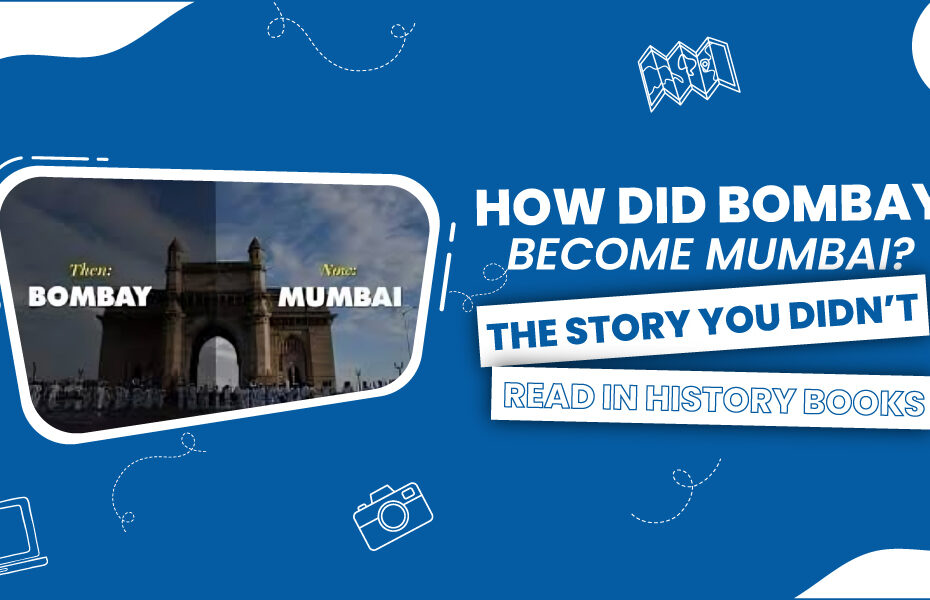Mumbai, the bustling city of dreams, or the city which never sleeps, encompasses many histories and many stories in its streets and buildings. Mumbai is full of vibrant life and wears many badges in its glory. At the same time, it is having an interesting journey of how its names evolved with the city. Let’s dive into the story of naming Mumbai.
The earliest and naturally the most ancient name of Mumbai known in public record are “Kakamuchee” and “Galajunkja”, meaning ‘land covered in water’. This name was used more by the Kohli fishermen in early days.
In a Persian text of 1507, “Mirat-i-Ahmadi”, written on Gujrat by Ali Muhammad Khan, the city is referred to as “Manbai”. In the 16th century Portuguese references of the city like the Legends of India (Lendas da Índia) written by Gaspar Correia, it has been called “Bombaim” or “Bom Bahia” which means ‘good bay’ in Portuguese. Other historical records show that Mumbai has also been called “Mombayn”, “Bombain”, “Monbaym”, and even “Boon Bay” at various points of time during the colonial era. Clearly, Mumbai wasn’t shy about trying out different names like outfits from a wardrobe!
However, during that time, Bombay was not how we know it now. It was infact split into 7 small islands – Mahim, Worli, Parel, Mazagaon, Bombay, Little Colaba, and Colaba. While areas like Dharavi, Sion, Wadala and Salsette Island were still not part of Bombay. Historical evidence near Kandivali area suggests that these islands were also inhabited 2300 years ago. And during that time, the area was known as “Heptanesia” which is a Greek word for collection of 7 islands.
In 1661, King Charles II of England married Catherine de Braganza and received the whole area of Bombay as a dowry gift. However, the treaty mentioning the dowry was never executed properly and eventually the British took control over the mentioned areas with strategies involving muscular power, economic control, and alliances.
Due to this transfer of land and power, the British wanted to anglicize the city name. The British merged the 7 islands together by constructing a causeway known as the Horny Vellard. And this created the Bombay as we see today. It is from the Portuguese name Bombaim that the British started calling it “Bombay” during the 17th century.
There are many stories to be explored about the history of naming within the city also. For instance, Colaba comes from a corrupted pronunciation of the original name “Kolabhat” (a Kohli village) given by the local Kohli inhabitants. The area was also named as Old Woman’s Island for reasons unknown.
The last sphere of the saga of naming of the city unfolds after Independence. It took inspiration from the larger movement that had spread across the country to shed colonial traces and embrace indigenous identity. Many cities, places, and important buildings have been renamed under this mission. The then state government of Shiv Sena party wanted to choose a name for the city that will honour its Maratha heritage and local identities. So in 1955, finally, Bombay was named Mumbai.
The word “Mumbai” takes inspiration from the name of a local deity, Mumba Devi, as called by the first local inhabitants of the coast, the Kohli or fishermen community. It is a combination of “Mumba” and “aai”, a Marathi word for mother. Calling the city Mumbai is a tribute to the Devi’s divine presence that has watched over the land for centuries.
The evolution of Mumbai is the story of a city which has turned into a great cosmopolitan city. Today, it is the financial, commercial, and entertainment capital of India. Home to the amazing Bollywood Industry, Mumbai welcomes every and has embraced all the immigrants. It is said that the city never sleeps, and never says no to anyone. Mumbai has something and some place for everyone who comes here with dreams. This is reason why Mumbai is lovingly known as the ‘City of Dreams’ by people who live here.
In publishing and graphic design, Lorem ipsum is a placeholder text commonly used to demonstrate the visual form of a document or a typeface without relying on meaningful content.
